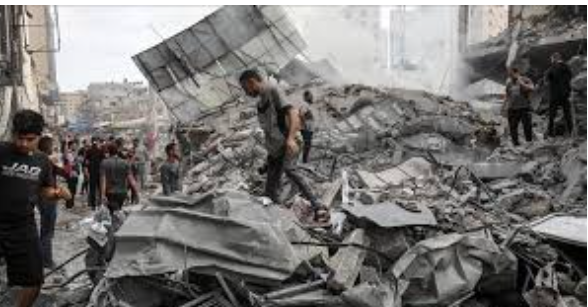The United Nations Human Rights Office has expressed concerns over the extensive civilian casualties in Gaza, reporting that close to 70% of verified fatalities over a six-month period were women and children.
According to the agency, many of these casualties resulted from the use of wide-area effect weapons in densely populated urban areas by Israel. Some deaths were attributed to stray projectiles from Palestinian armed groups, though the majority stemmed from attacks in heavily populated areas.
The UN’s findings highlighted “unprecedented” violations of international law, raising the prospect of war crimes and other potential atrocity crimes.
UN Human Rights Chief Volker Türk cited that these violations indicate a failure to observe international humanitarian principles, such as the laws of distinction, proportionality, and precaution, which are designed to minimize civilian harm in conflict zones.
The report documented 8,119 verified deaths in Gaza from November 2023 to April 2024, with children and women accounting for 44% and 26% of the fatalities, respectively. According to the data, most of the deceased were killed in residential areas.
The Gaza Health Ministry, overseen by Hamas, corroborates the UN’s findings with its report of over 43,300 deaths in the region over the past 13 months, highlighting that children represented about a third of those fatalities.
The UN has reiterated the importance of adhering to international humanitarian laws in conflict, emphasizing that the disproportionate toll on civilians, especially children, underscores the urgent need for compliance with these legal protections.
Türk called for a “due reckoning with respect to the allegations of serious violations of international law”.
The IDF has previously told the BBC in response to criticism that it “will continue to act, as it always has done, according to international law”.
The report also said the way the warring parties have conducted the conflict in Gaza has “caused horrific human suffering”.
The UN said Palestinian armed groups have waged war from densely-populated areas and indiscriminately used projectiles, likely contributing to the death toll, while the IDF has destroyed civilian infrastructure and “left many of those alive, injured, displaced and starving, without access to adequate water, food or healthcare”.
The situation is worst in north Gaza, which aid groups say has been under siege since early October when Israel launched a new ground offensive against Hamas.
The UN said no food aid entered the north during the first two weeks of October.
This prompted the US to issue an ultimatum to Israel to increase aid by 12 November or risk losing some military support.
Jan Egeland, the head of aid organisation Norwegian Refugee Council, told the BBC on Friday that he saw “devastation, despair, beyond belief” on a recent visit to Gaza.
“There is hardly a building that is not damaged. And large areas looked like Stalingrad after the Second World War. You cannot fathom how intense this indiscriminate bombing has been on this trapped population,” he said.
“It’s evident that it is first and foremost children and women who are paying a price for this senseless war,” he added.
Israel launched its current military offensive in Gaza after Hamas’ attack on 7 October 2023 that killed 1,200 people in Israel and took 251 hostages back to Gaza.




























